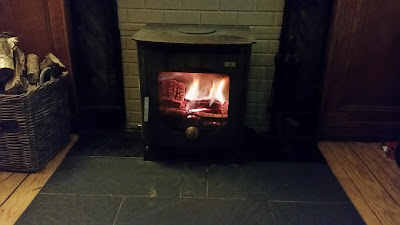The subject of Freya's cats came up recently on social media, so I wanted to share this excerpt from my forthcoming book Pagan Portals Freya. I hope this may clarify some points, as this summarizes the information we have from the older sources and may help people differentiate between new ideas and stories and the older beliefs.
Cats –
Freya is said to travel in a chariot pulled by two cats, probably wild cats. The
Grimnismal doesn’t tell us or even hint at what kind of cats they may be,
saying only “Whenever Freya travels, she sits in her carriage which is drawn
by cats”. The Skáldskaparmal refers
to them as ‘gib-cats’ an antiquated term for male cats, possible neutered. The
actual term used in the original language for the animals is vague and they
have been depicted in art as everything from small house cats to wild cats,
although in modern folklore and belief they are usually envisioned as large
cats.
Her ownership
of these cats[1]
has been the source of much speculation among scholars. O’Donoghue suggest they
may represent chaos as a chariot pulled by cats would seem to be a difficult
option. Turville-Petre sees the cats as representing lust, saying: “The cat,
as the Norse pagans must have known, is the most lascivious of beasts.”
(Turville-Petre, 1964). Ellis Davidson takes the most benevolent view and
ascribes the cat association to Freya’s connection to seidhr and the cat’s
reputation as a supernatural animal.
In the
older sources these animals are never named, however Diana Paxson in her 1984
novel ‘Brisingamen’ chose to name the cats Bygull (Beegold) and Tregull (Treegold)
as modern poetic kennings of Honey and Amber[2].
These names have gained popularity across modern pagan books and can be found
in several such texts given as if they are the original mythic names of the
cats.
While
it is generally assumed today, and has been across artwork for many years, that
the cats are indeed cats there is some question around the original word used.
Older translators have no hesitation to give the word as cats or tom-cats, but
Grimm in Teutonic Mythology questioned whether bear wasn’t the intended term
and an assortment of other animals, including weasels, have also been
suggested. Despite this there is reasonable evidence that some form of either
wild or domestic cat was meant and would have been understood by the
contemporary audience.
 |
| page 42, Brisingamen by Diana Paxson, 1984 |
[1] If one can ever be
said to own a cat
[2] I was told that this
was a personal choice in an online correspondence with the author, however it
is also publicly referenced in Our Troth, vol 1, page 373.


